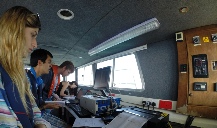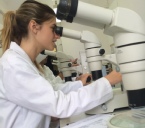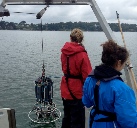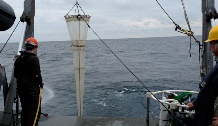Falmouth Field Trip 2014-
This website reflects the opinions of students and not the views of the University of Southampton or the National Oceanography Centre.
Produced by: Alice Duff, Philippa Fitch, Joanna Gordon, William Harris, Thomas Jefferson,
Eirian Kettle, Jesse Marshall, Dominique Mole, Emma-







Estuary -
Burkholder, J.M., 2009. Harmful algal blooms. Encyclopedia of Inland Waters, pp.264–285.
Day, J. W., C. A. S., Kemp, W. M., Yanez-
Forro, L., Korovchinsky, N.M., Kotov, A.A & Petrusek, A. (2008). Global diversity of cladocerans (Cladocera; Crustacean) in freshwater.
Grasshoff, K., Kremling, K. & Ehrhardt, M. (1999). Methods of seawater analysis.
3rd ed. Wiley-
Heywood J, Scrope-
Johnson, K. & Petty, R.L. (1983). ‘Determination of nitrate and nitrite in seawater
by flow injection analysis. Limnology and Oceanography’. 28 1260-
Langston, W., Chesman, B., Burt, G., Taylor, M., Covey, R., Cunningham, N., Jonas, P. and Hawkins, S. (2006). Characterisation of the European Marine Sites in South West England: the Fal and Helford candidate Special Area of Conservation (cSAC). Springer, pp.321—333
Larink, O. & Westheide, W. (2011). Coastal Plankton; Photo Guide for European Seas,
2nd edition, pp 114-
Liss, P. S. & Pointon, M. J. (1973). Removal of dissolved boron and silicon during
estuarine mixing of sea and river waters. Geochimica Et Cosmochimica Acta, 37, 1493-
Maeir, G., Nimmo-
Parsons, T. R., Maita, Y. & Lalli, C. (1999). ‘A manual of chemical and biological methods for seawater analysis; 173 p. Pergamon.
Segar, D. A. (1998). Introduction to ocean sciences (1st ed.). Wadsworth Publishing Company.
Smyth, T., Fishwick, J., Lisa, A., Cummings, D., Harris, C., Kitidis, V., Rees, A.,
Martinez Vicente, V. and Woodward, E. (2010). A broad spatio-
Statham, P. J. (2012). Nutrients in estuaries-
Thrush, S. F., Townsend, M., Hewitt, J. E., Davies, K., Lohrer, A. M., Lundquist,
C. & Cartner, K. (2013). The many uses and values of estuarine ecosystems. Ecosystem
Services in New Zealand: Conditions and Trends, 226-
Treguer, P. J. & de la Rocha, C. L. (2013). The World Ocean Silica Cycle. Annual
Review of Marine Science, Vol 5, 5, 477-
Uncles, R., Stephens, J. and Smith, R. (2002). The dependence of estuarine turbidity
on tidal intrusion length, tidal range and residence time. Continental Shelf Research,
22(11), pp.1835-
| Geophysics |
| References |
| Introduction |
| Physical |
| Chemical |
| Biological |
| References |
| Introduction |
| Results |
| References |
| Introduction |
| Physical |
| Chemical |
| Biological |
| References |